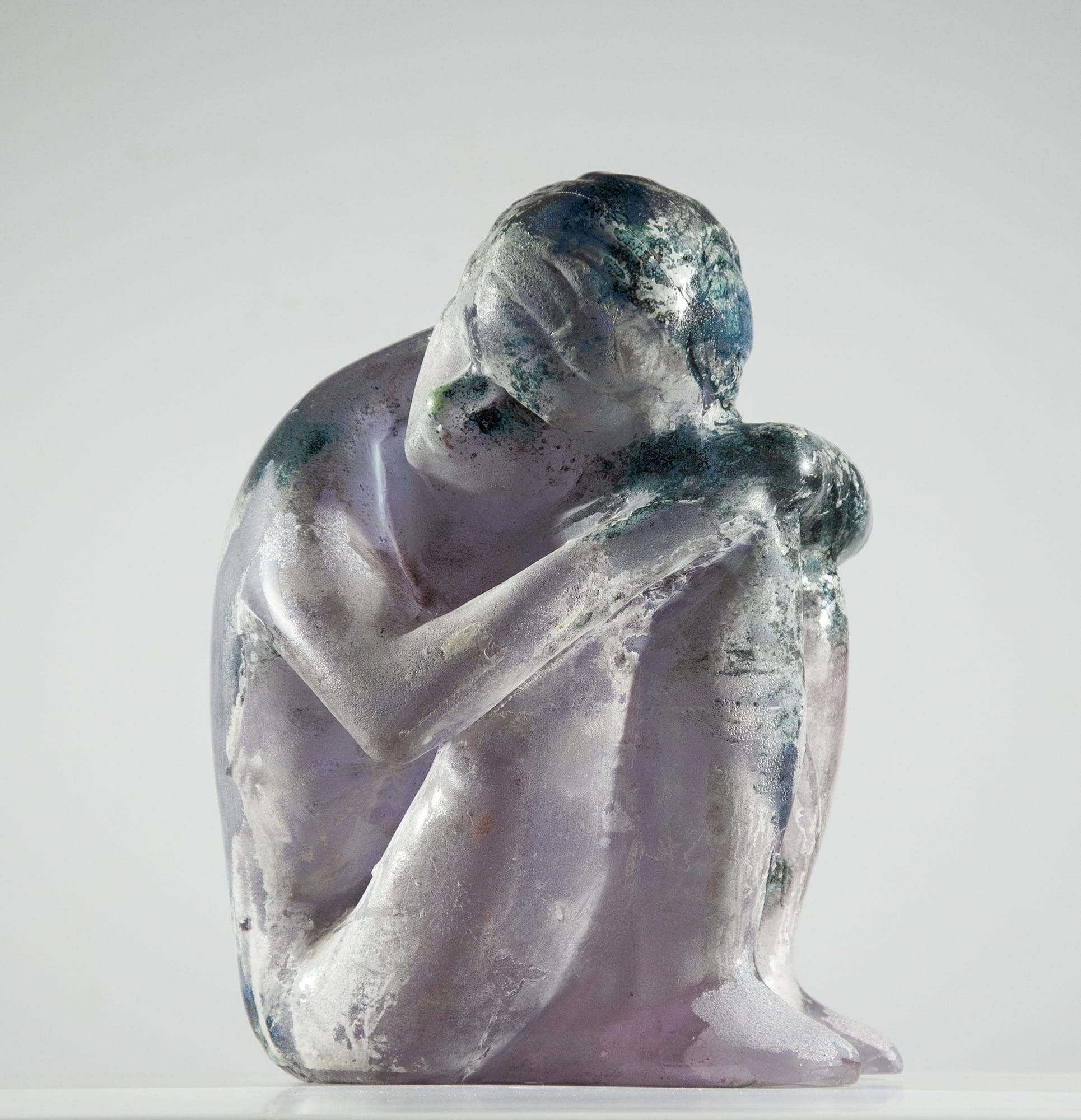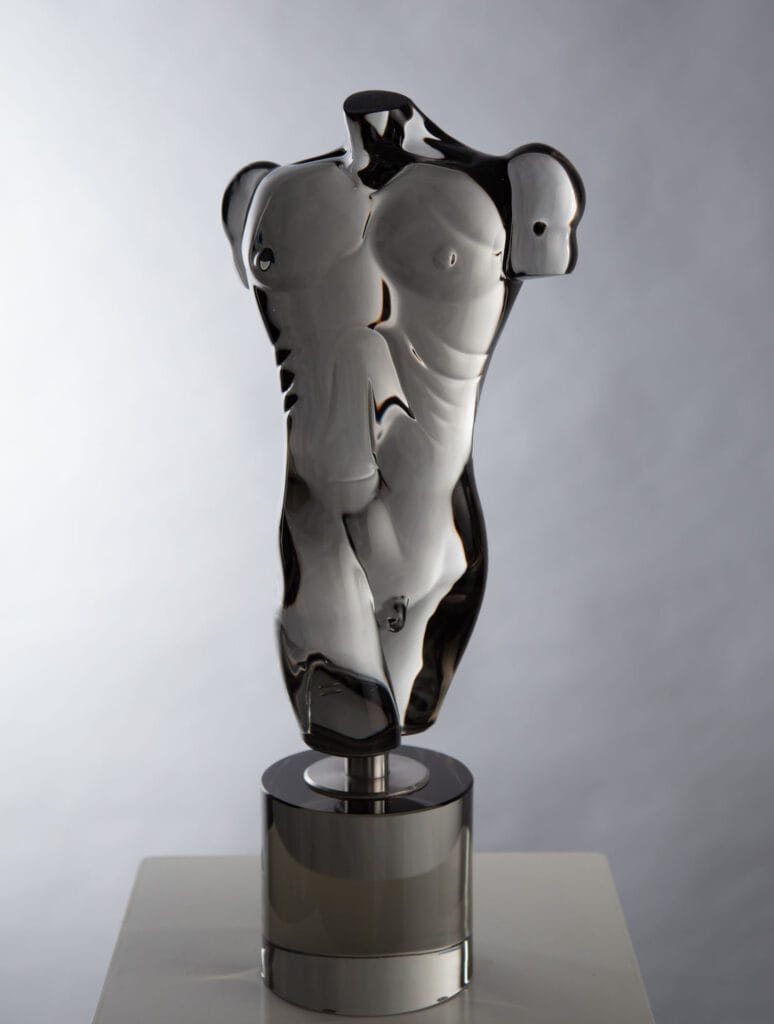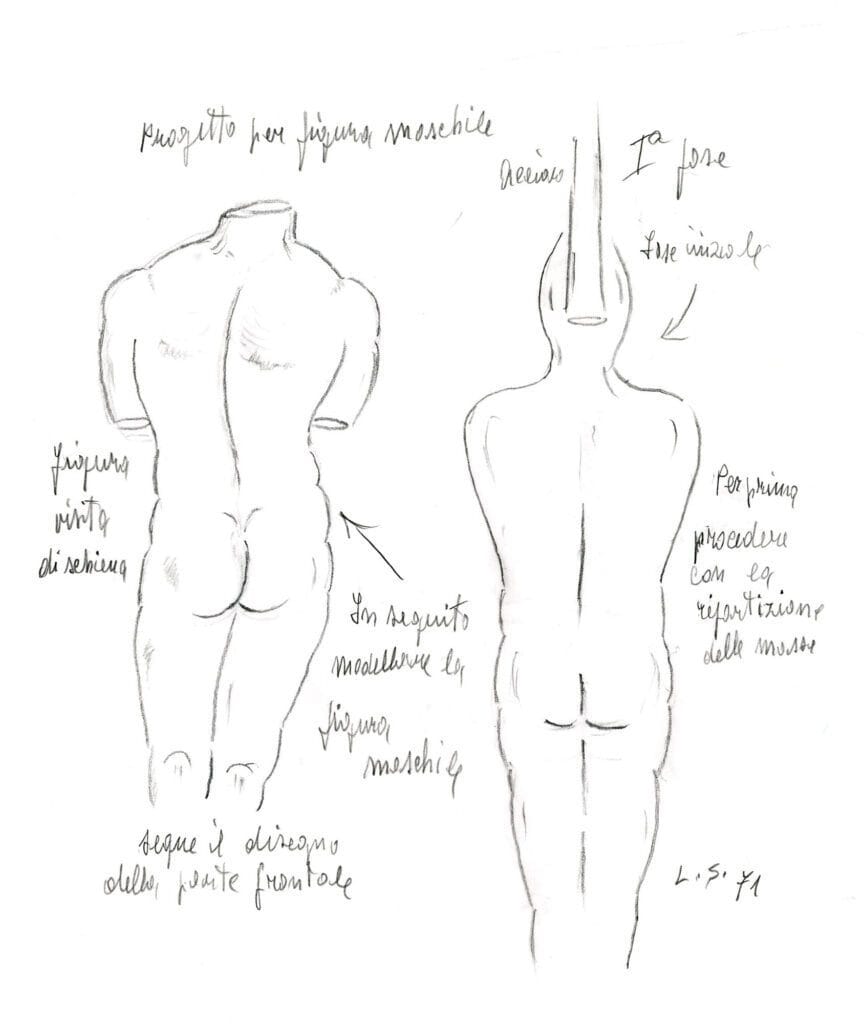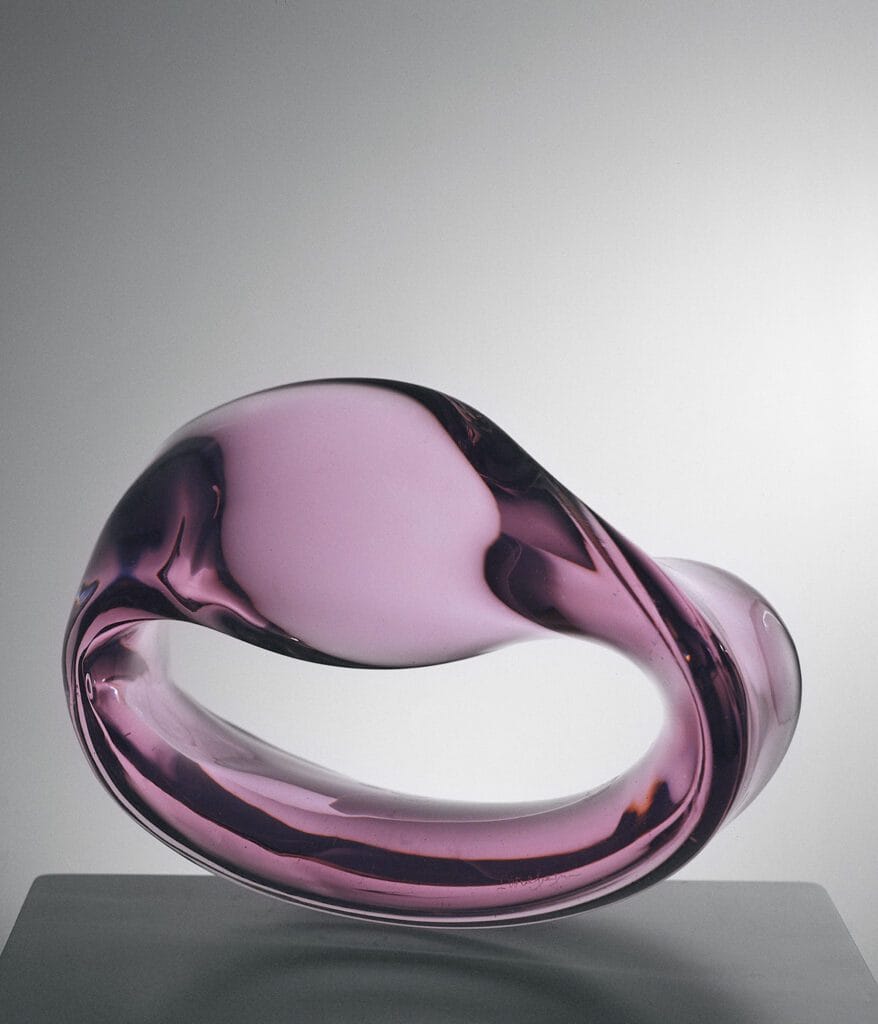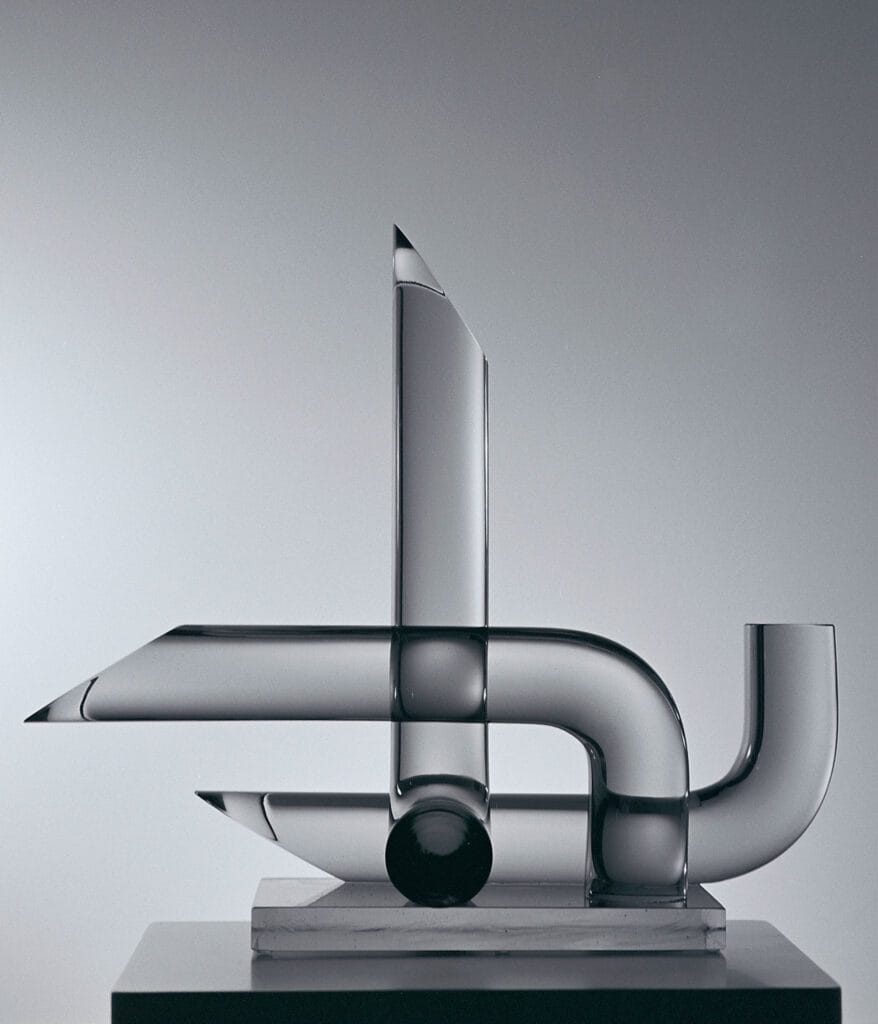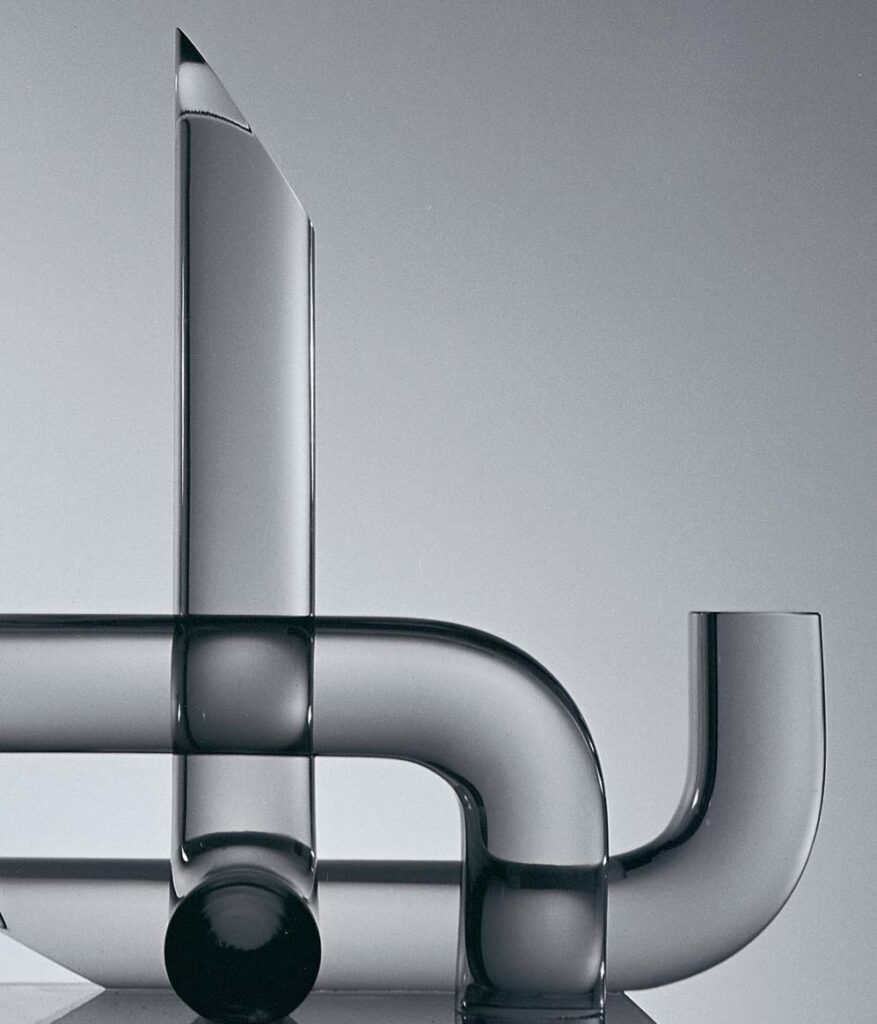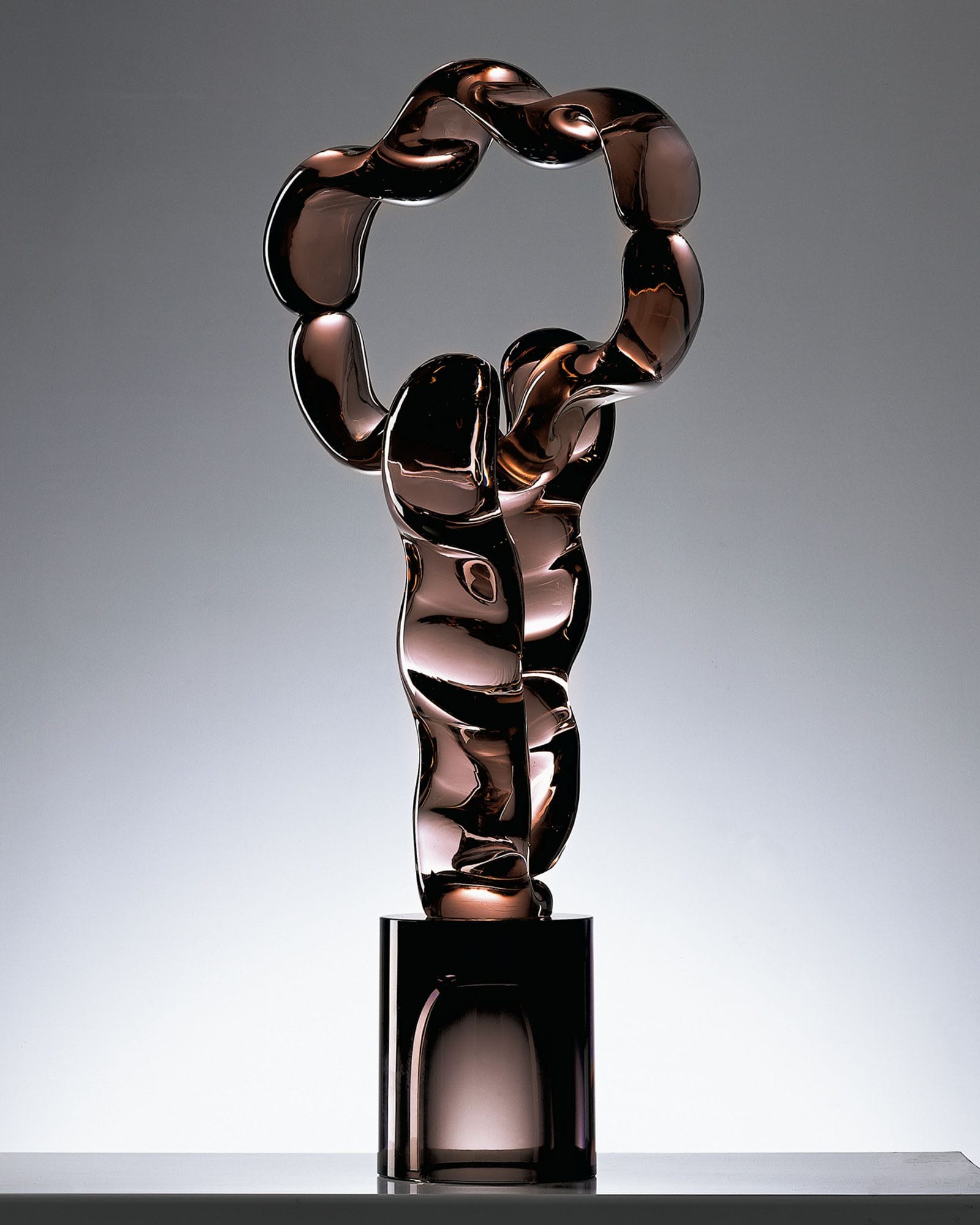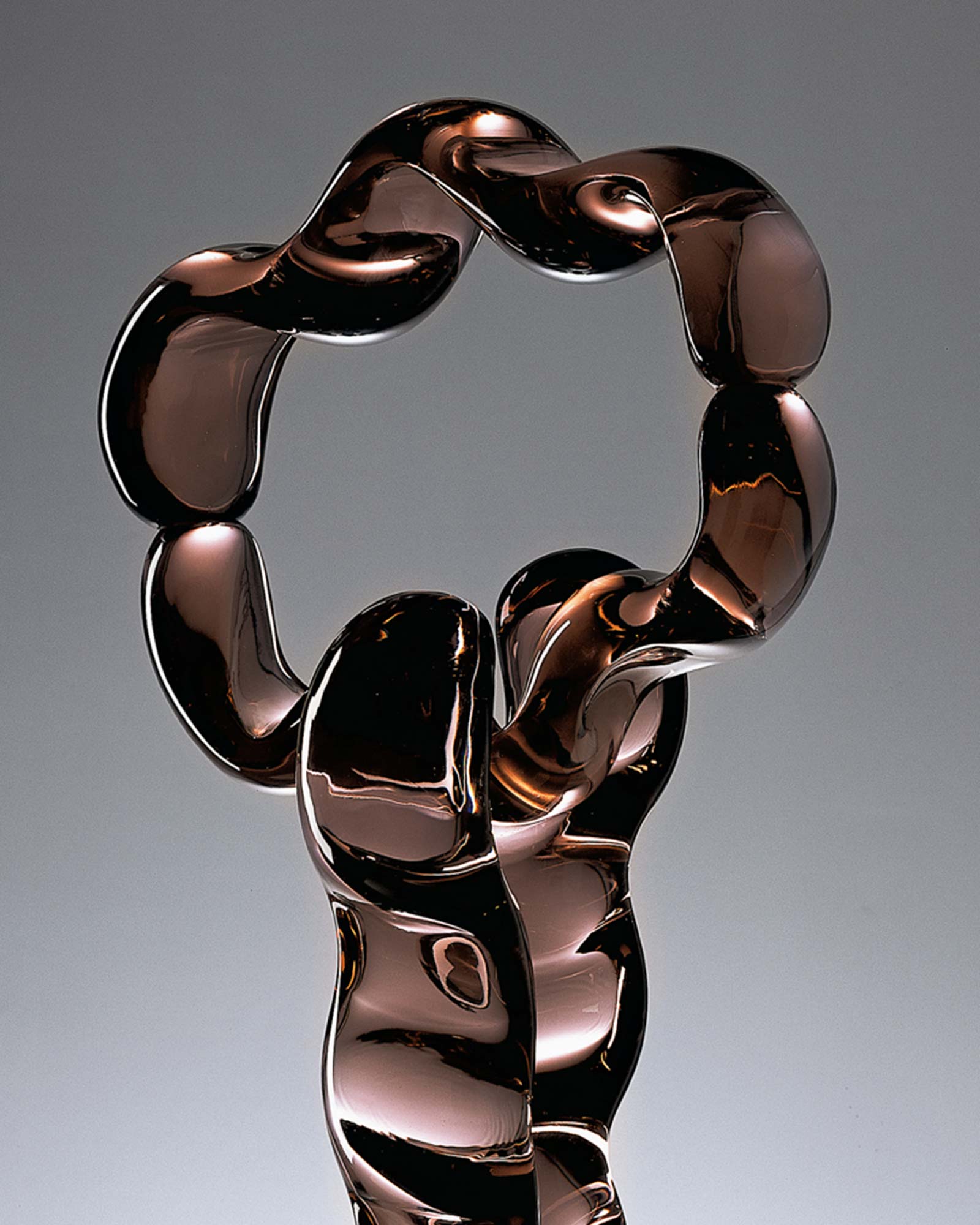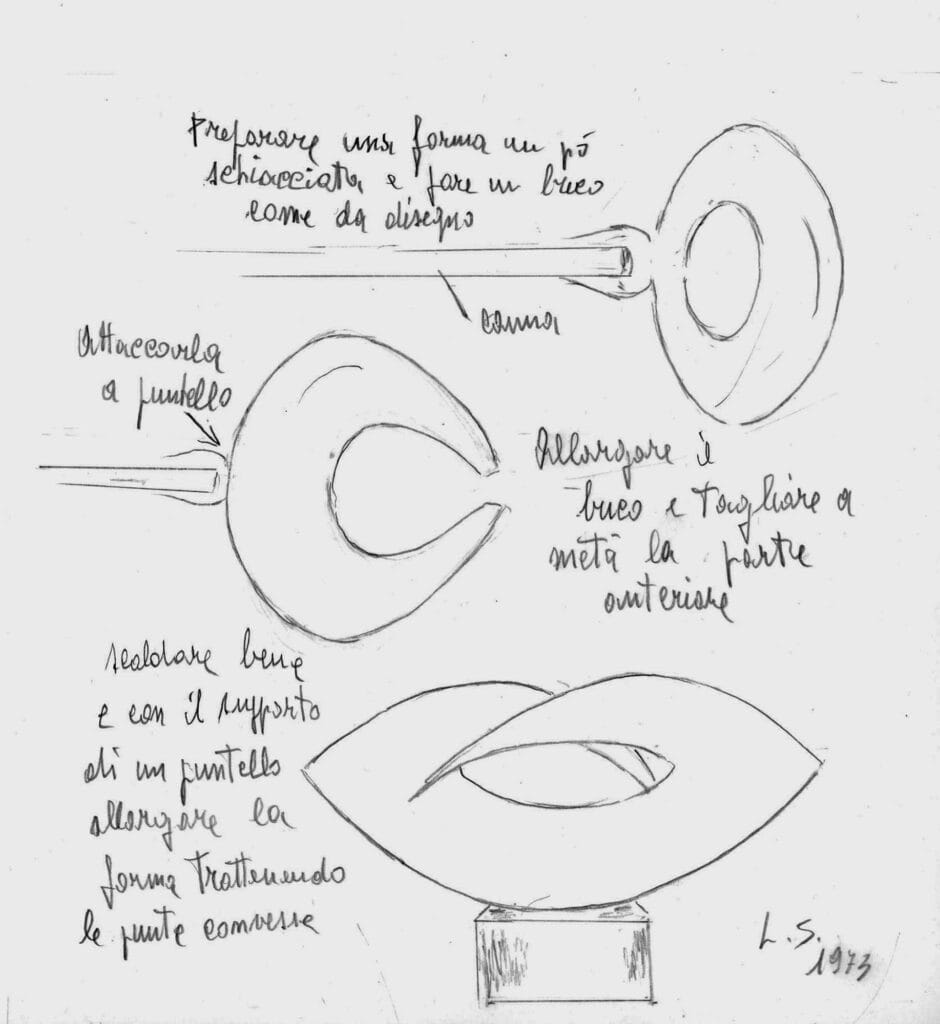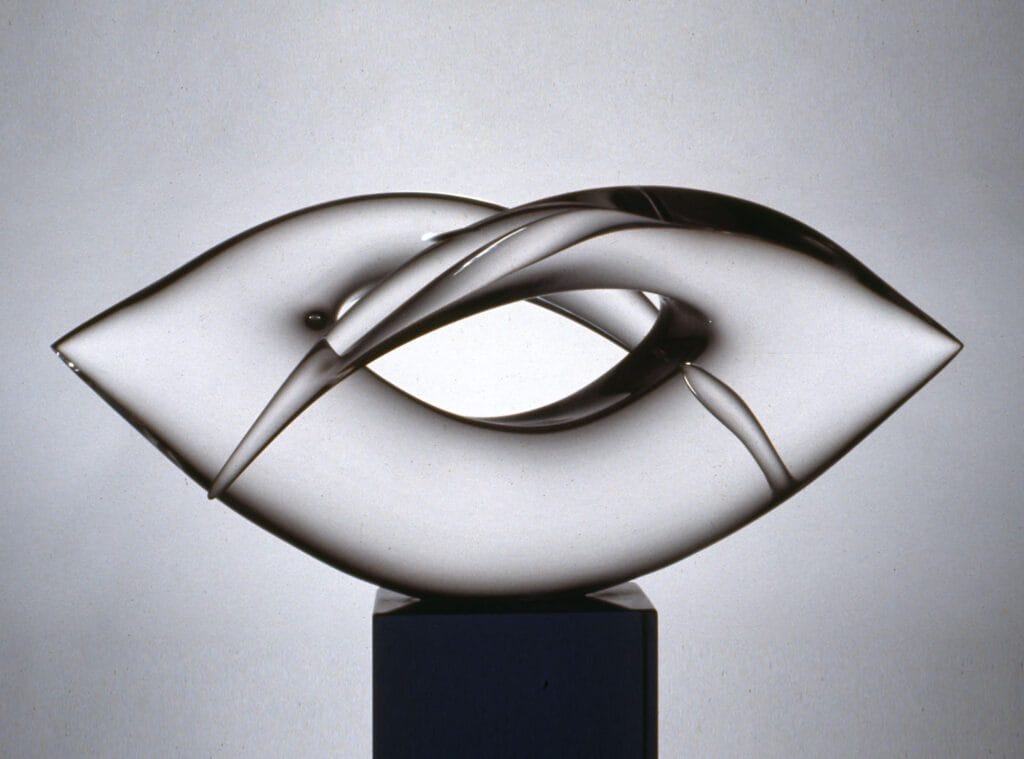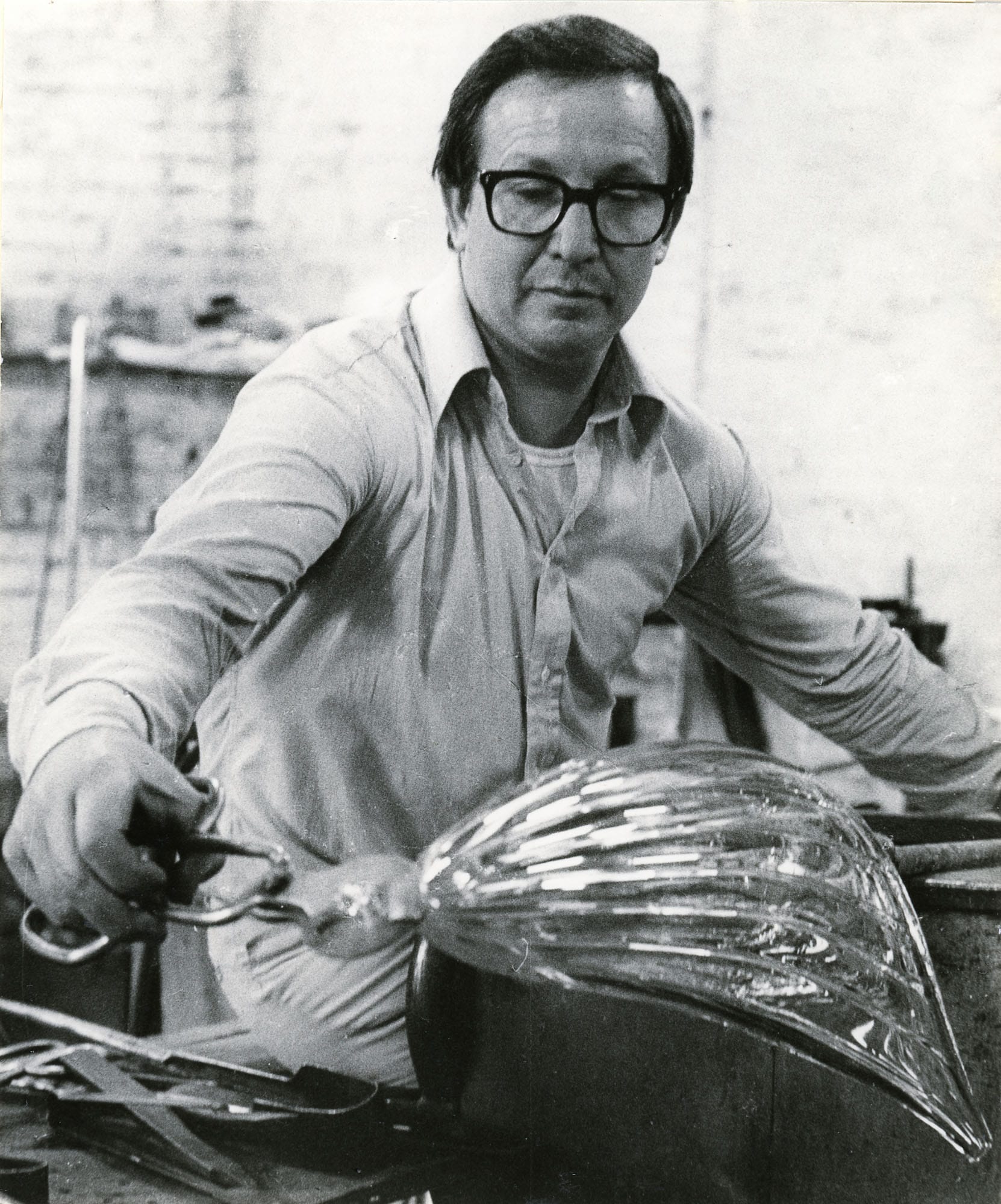At the beginning, the drop
These are the years in which Livio Seguso, having acquired his independence, works in his atelier-furnace, free to search for new forms allowing him to express his feelings, and following his vocation for art, starts personal research focused on glass poetics. From here, he begins his dialogue with the material to reconsider and address all the issues it entails and give their investigations an innovative direction.
Putto, 1968
Neodymium violet glass, 30×22×20 cm
Torso d’atleta, 1971
Light grey glass, 58×27×15 cm
Male figure project, 1971
Superficie continua, 1973
Neodymium violet glass, 36×24×14 cm
Private collection
Tubi, 1972
Light grey glass, 38×38×20 cm
Exhibited at the 36th Venice Biennale
La danza, 1974
Rosy colored glass, dark grey glass base, 98×43×26 cm
Executive project for Contrappunti, 1973
Contrappunto, 1973
Clear glass, 25×40×9 cm
Livio Seguso 1970
…Livio Seguso’s glasses do not indulge in technical effects. They are made of hot glass, generated from a nucleus intertwined into the dialectic of light, whose illuminated and illuminating form is an ambiguous reflected image. […]In the emblematic symbolic form, the annulment of sculpture as analysis occurs through the concession that sculpture must be poetry. The tight linearity of curves and counter-curves, the simultaneity of imperceptible movements, and the bringing back of the plane of convex and concave profiles capable of isolating fragments of unmistakable sensuality translate this rapacious ecstasy with restlessness and passionate melancholy.
Luigina Bortolatto, art critic, Treviso
